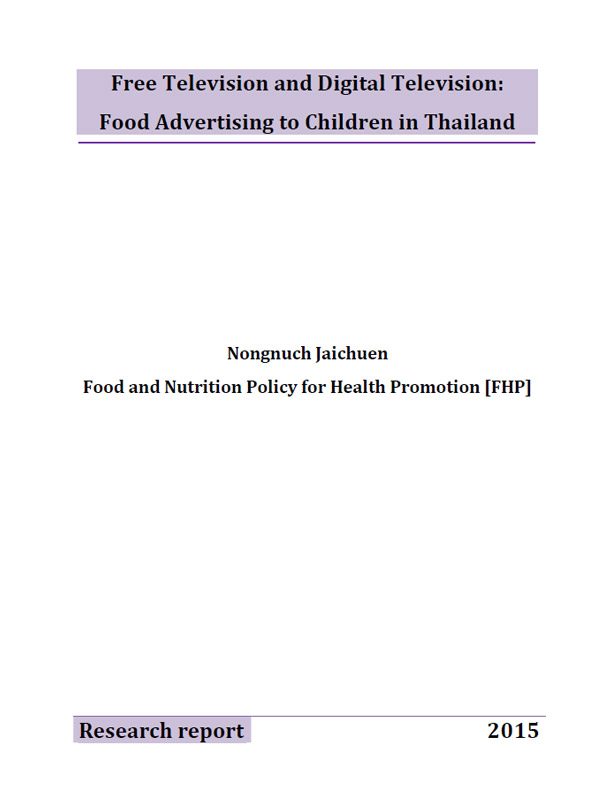Title: Free Television and Digital Television: Food Advertising to Children in Thailand
Authors: Nongnuch Jaichuen
Issue Date: 2015
Publisher: Food and Nutrition Policy for Health Promotion [FHP]
Abstract
Advertising is a marketing activity and plays an important role in most businesses, especially in forprofit
businesses [1]. It also is a marketing tool used by businesses to affect sales growth and
stimulate demand. Today, snack and beverage firms compete with one another to increase their
firms’ profit and market shares, thereby fuelling competition. The marketing of these products
induce consumption values among teenagers in accordance with the teenagers’ preference. For
example, food industries try to use promotion techniques, such as exchange purchased packages for
toys, including dolls, robots, give‐aways, colorful packaging, or popular cartoon characters, to attract
children and occasionally use children as a product presenters to further incentivize children's
consumption [2].
Euromonitor, the marketing research organization, found that sales are driven by snacks targeting
children and adolescents aged 5‐24 years old [3]. In addition, Thai clamp‐down on snack food ads
loom survey in 2004 found that the main factor promoting enormous snack consumption among
children was the influence of television advertising as television was the main channel for
advertisement. Moreover, the survey found that 67 varieties of snack advertising broadcasted on
television were found in the morning programs during the weekend (7:30‐10:30) to which children
were exposed the most[4].
Related Works:
การพลิกแพลงกลยุทธ์การโฆษณาและการส่งเสริมการตลาดนมผงภายหลังประกาศใช้ พระราชบัญญัติควบคุมการส่งเสริมกา...
รายงาน ผลกระทบของการระบาดของโรคโควิค-19 และมาตรการทางสังคม ต่อความมั่นคงทางอาหารของผู้ที่มีรายได้น้อ...
ช่องว่างเครื่องมือนโยบายด้านอาหารและโภชนาการในโรงเรียนของประเทศไทย
รายงานฉบับสมบูรณ์ ถอดบทเรียนความสำเร็จเพื่อขยายผล กรณีศึกษา : โรงเรียนประถมศึกษาและขยายโอกาสที่มีพัฒ...
การเลี้ยงลูกด้วยนมแม่กับการทำงาน: กรณีศึกษาของแม่ในกรุงเทพมหานคร
รายงานประจำปี 2556 แผนงานวิจัยนโยบายอาหารและโภชนาการเพื่อการสร้างเสริมสุขภาพ

